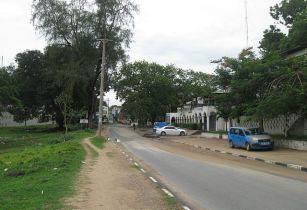Kenya’s road network expanded by 16 per cent in 2014 and the first 40 km of the new Mombasa-Nairobi standard gauge railway project has also been completed
According to Central Bank of Kenya’s Economic Survey 2015, total number of paved roads reached 13,000 km last year, up from 11,230 km in 2013. This is a result of the government increasing access to rural areas as a part of its annuity plan, under which at least 10,000 km of roads are to be paved by 2018. Under the programme, contractors will design, finance, build, operate and maintain the roads, while the treasury will act as a guarantor on their bank loans. Adoption of low-volume sealed roads technology has been credited with the improved quality of roads.
Most of the roads upgraded last year were in rural areas, where poor access has hampered economic development as farmers have been unable get their produce to markets. Tilapia fish, a local delicacy in Kenya, has witnessed rising demand in urban centres, including in Nairobi, which is more than 400 km away. However, an inaccessible road network has hampered its distribution over the years. “The opening up of the Homa Bay-Mbita road has boosted the fish trade as we can access markets in Kisii, Nakuru and Nairobi faster. Previously, fish would go bad before reaching consumers, hurting our profitability,” said Rose Akinyi, a fishmonger in Homa Bay, a township on the shores of Lake Victoria.
Road construction has had a knock-on effect on the demand for residential and commercial space and land prices. “With the construction of the road, business at the trading centres has increased. Land prices have also risen as developers flock into these areas seeking to invest in real estate,” explained Penninah Wanjiku, a property owner at the Kithimani Junction.
Both the central and regional governments have invested heavily in upgrading the roads in the last five years. In the 2014-15 financial year, the central government allocated US$2.2bn on roads, almost twice the previous year’s allocation.
Alongside expanding the road network, the railway network is being extended too. The Mombasa-Nairobi standard gauge railway project is expected to boost regional trade within East Africa. Contractor China Road and Bridge Corporation (CRBC) has completed 40.2 km of the planned 472 km rail line, which represents about eight per cent of the project that is expected to cost a total of US$5.2bn.
“The project is on course to be completed on time. Since officially starting, we have made lots of progress,” observed Julius Li, CRBC manager for external relations and cooperation.
The new rail line will supplement road transport in the Northern Corridor, which links Kenya’s port city of Mombasa to Uganda, Rwanda, Burundi and South Sudan, and is expected to cut freight costs to US$0.08 per mt per km from the current US$0.20. As freight moves from trucks to rail, there are also expectations of a significant reduction in the cost of road maintenance.
– Mwangi Mumero





















